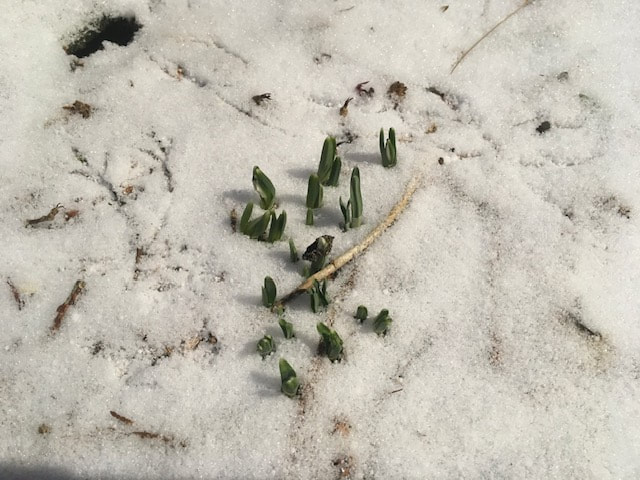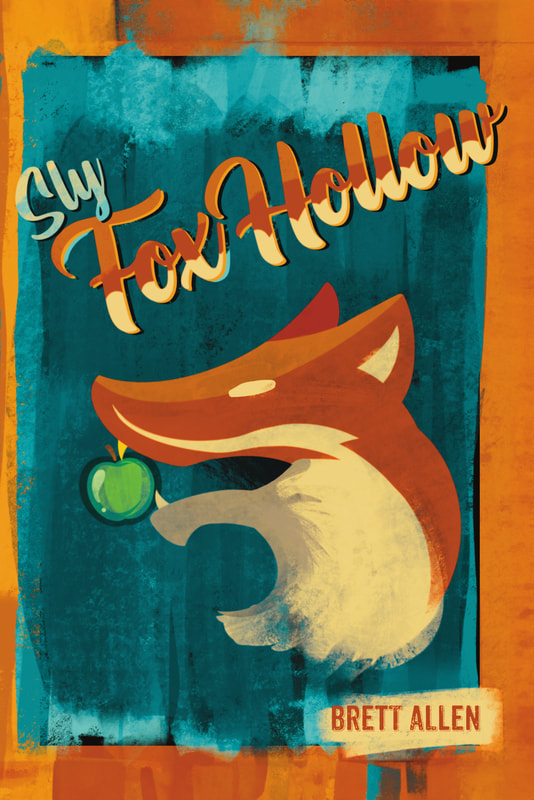|
How to sow native plant seeds in winter for spring growth will be offered on Wednesday, December 6, 5:30pm – 7:00pm. This hands-on demonstration will be hosted by Big Bluestem Farm and the Newaygo County Environmental Coalition (NCEC) and will take place at the Waters Edge Golf Course – Lakes Restaurant, 1100 Ramshorn, Fremont, MI 49412. “Many native plant seeds need the cold weather of winter in order to germinate in spring,” states Ken Hoganson of Big Bluestem Farm. “We will demonstrate how you can easily sow seeds in reusable household containers so you can grow the native plants that you want in your garden and yard.” Michigan native plants are naturally adapted to live in a Michigan climate, which brings periods of freezing temperatures, Ken explains. For optimal germination many types of native seeds require exposure to cold, moist winter conditions alternating with the warming spring sun in order to germinate and grow well. This process is called “stratification”. The program will include a discussion on the importance of native plants to our local ecosystems, what winter sowing is, and the benefits of the process. There will be demonstrations on the types of common household containers that are suitable to use as “mini-greenhouses” for the seed sowing. “We may have some native plant seeds to give away,” adds Sally Wagoner of the Newaygo County Environmental Coalition. “We have some left over from the November Seed Swap. This is a great opportunity for folks to go home with some native plant seeds, turn their plastic milk containers into mini-greenhouses, and get ready for spring planting!” Big Bluestem Farm is a native plant nursery near Bitely that specializes in native plants and an expanding “seed bank”. Ken and Shelly Hoganson grow dozens of different species of native plants providing plugs, quarts and gallons for gardens and installations by appointment. They also offer sales at some of the spring and summer native plant sales in the region. Also on the agenda for the evening will be information about Vernal Pools Monitoring, and the Wild Ones Newaygo Region chapter in development. Katie Clark of NCEC is the local field coordinator for the Vernal Pools Partnership. These elusive spring ponds are highly important to our local ecosystems, yet they are not recognized or identified very much in Newaygo County. Ms. Clark will discuss how community members can become “citizen scientists” this coming spring in the Vernal Pools Monitoring Workshop. This will add Newaygo County and its vernal pools data to the national map. “Wild Ones: Native Plants, Natural Landscapes” is a national non-profit that promotes environmentally sound landscaping practices to preserve biodiversity through the preservation, restoration and establishment of native plant communities. “There is a growing interest in native habitats and native plants in Newaygo County, so we are in the process of developing a local Wild Ones Chapter. This will benefit both our community members as they pursue native plants in their yards & gardens, as well as our unique native habitats throughout the County,” explains Sally Wagoner. Registration for the Winter Seed Sowing program is recommended, although walk-ins can be seated as well. The event is free, with food and beverages the responsibility of attendees. To register click here: Winter Seed Sowing. Or you can email [email protected]. Visit the Newaygo County Environmental Coalition website calendar to view and register for this and other upcoming events in the region: www.nc-ec.org. For more information about winter seed sowing and native plants, contact Ken Hoganson: [email protected], 630-915-7715.
0 Comments
Find a bow, snap a photo, and win prizes at Land Conservancy nature preserves
GRAND RAPIDS, MICH. (Nov. 20, 2023) -- This holiday season, busy elves from the Land Conservancy of West Michigan have hung a big red bow on one tree at several nature preserves located throughout West Michigan. If you find them, you have the chance to win some cool prizes! The Land Conservancy of West Michigan has partnered with several local artists and businesses to create a fun way for families and explorers of all ages to get outside this season. Taking part in this scavenger hunt promises participants the opportunity to discover new trails and win amazing prizes from sponsors like Brewery Vivant, REI, Querkus Creative, and many more! Event Details: The event will run from November 20-December 31, 2023. A complete list of the nature preserves where participants can search for bows and prizes will be revealed on the Land Conservancy’s website on Monday, November 20. How to Enter: Hike Explore select LCWM nature preserves any time between November 20 and December 31, 2023 to look for trees decorated with holiday bows! There is only one bow per nature preserve. Snap Take a photo with the decorated tree! Share Post the photograph to Instagram and tag @naturenearby*, or email the photo to [email protected]. If you correctly identify the tree species the bow is affixed to, you will be entered into the prize raffle twice! *Note: Your Instagram profile must be public for us to see and count your entries! Win Prizes – Each holiday bow found enters you into a raffle to win prizes! This year, we have grand prizes for the first two people to visit all of our preserves and for the first two people to correctly identify the most trees. If you don’t win a grand prize, you will still be entered into a raffle – every tree found and every correct tree ID counts as a submission. Bonus Prize – This year, your social media entries make you eligible for a bonus prize! This means each time you find a tree and share it on Instagram, your name will be entered into a separate raffle for a special prize (1x per tree shared). Anyone who wins a grand prize or raffle prize is still eligible for this bonus social media prize. Rules & Guidelines: • One photo submission per family per preserve • Photo should clearly show the bow and the tag indicating the preserve name • Submissions will be accepted starting at 12:00 am on November 20 through 11:59 pm on December 31. For more information, please visit our event page on our website: https://naturenearby.org/events/holiday-hike-challenge-23/ Photo and article by Donna Iverson When November arrives, my attention turns to turkey. Not the turkey I’m looking forward to on my Thanksgiving dinner plate. But the wild turkeys meandering along roads and highways in small flocks. Seemingly fearless, they waltz across the road while cars line up patiently waiting for them to pass. But get out of the car, to try to get a photo and they pick up their speed, moving at 15 to 25 miles an hour out of range. Wild turkeys are native to Michigan. They are a bird of many contradictions. Basically sociable, an individual turkey can become aggressive toward humans and attack. (If threatened, grab a broom or a hose) Spending most of their time scratching on the ground near woods, they can nevertheless fly at 55 miles per hour. While wild turkey numbers are growing and the flocks are moving into suburbia, it hasn’t always been so. In the late 1800s, wild turkeys had all but disappeared from the state. Logging had destroyed their habitat.In the 1950s, wildlife biologists began a reintroduction program in southwest Michigan. And now the wild turkey is no longer endangered. If you have wild turkeys in your yard, you are lucky. For one thing, they eat ticks. One turkey can eat 200 ticks a day. They feed on nuts, berries, insects, snails, and grains, like corn and soybean. Acorns are a special favorite. Predators include raccoons, skunks, opossums and occasionally crows and coyotes. Wild turkeys are highly intelligent and have excellent vision and hearing even though they have no ears. Scientists report they can make 20 different vocalizations which are recognized by others in the pack. They are also curious and polygamous. Surprisingly, they sleep in the top of trees. In the spring, an alpha male will mate with nearly every hen in the flock. Hens lay eggs in ground nests often near trees. Young turkeys are extremely vulnerable to prey until they can fly, about two weeks after hatching. A young turkey is called a jake. As winter approaches, the flock will break up into smaller groups ..the hens, the toms and the jakes. They have a hard time surviving in deep snow, so are mostly found in southern Michigan and not in the UP. Their home range is one to four miles in circumference. Hunting season for wild turkeys began September 15 and lasts till November 14. A state license is needed. For more information on attracting wild turkeys to your property, check out https://www2.dnr.state.mi.us/publications/pdfs/huntingwildlifehabitat/landowners_guide/Resource_Dir/Acrobat/Wild_Turkeys.PDF Local author Brett Allen coming to FADL
Live @ the Library, a series of events including author visits and informational presentations at Fremont Area District Library is thrilled to host former Fremont resident and author Brett Allen for a presentation of his new book, Sly Fox Hollow. Brett Allen will be doing a short reading from Sly Fox Hollow, and will discuss how our current national socio/political climate inspired a story about a small-town mayoral election gone awry. He’ll also share how growing up in Fremont affected and inspired the work and will briefly talk about his first book, Kilroy Was Here, which is loosely based on his 2009 deployment to Afghanistan as a cavalry officer with the U.S. Army. This event will take place in the Fremont library’s Community Room on Tuesday, November 14th at 7:00 p.m. |
Archives
July 2024
Categories |






 RSS Feed
RSS Feed